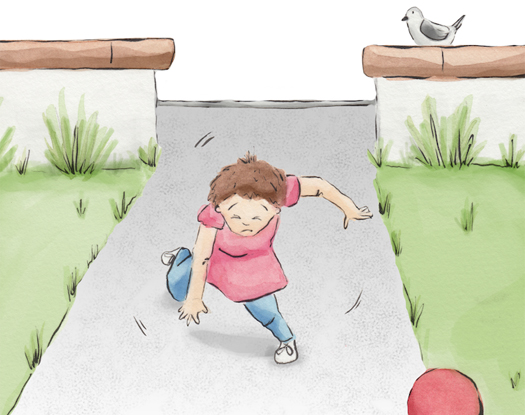Reflexes
THE PLANTAR AND BABINSKI REFLEXES - Balance and Body Awareness
In many ways the neurological development of the feet mirrors the journey of the Palmer reflex.
The Plantar reflex sits under the toes and is triggered through touch, causing the toes to curl down and grasp the object. Release and settlement of the Plantar reflexes allows the toes to isolate so they can lie in a flat position. This provides a point of stability when the child stands on their feet. Isolation of the toes is important when establishing a normal walking pattern; where movement transfers from the heel to the toe as a child walks.
In close conjunction with the Plantar reflex is the Babinski reflex; a deep-rooted reflex that lies along the outside edge of the foot. Settlement of the Babinski reflex generally takes longer as it is responsible for establishing sensory awareness between the inside and the outside borders of the foot and for the development of foot arches, which offer the foot and ankle greater stability when a child learns to stand up.
Together these two reflexes form the ‘platform’ on which a child stands when they begin to walk. To increase the child’s stability and balance in standing and during movements it is essential that these two reflexes work together.
Stability in the feet supports the ankles, knees and hips. This ensures that the pelvis and the lower back do not have to over work to maintain stability in standing and movement.

Persistent Plantar and Babinski Reflexes may lead to:
- Difficulty / delay in learning to walk.
- Poor balance.
- Immature foot arches and ankle stability.
- Tip toe walking.
- Lower back pain when walking and standing.
- Reduced eye foot co-ordination.
- Difficulty wearing shoes – if toes curl up.
- Reduced stability in the feet in standing – especially noticeable in the dark when vision cannot help.
- Reduced speed when running.
- Laboured co-ordination and speed for sport.
Copyright © 2025 | Privacy Policy


